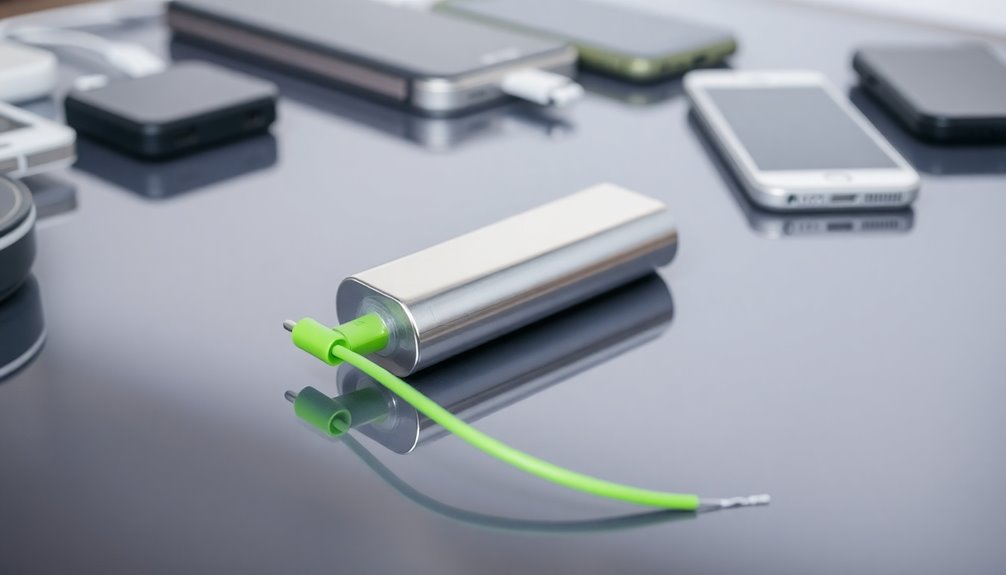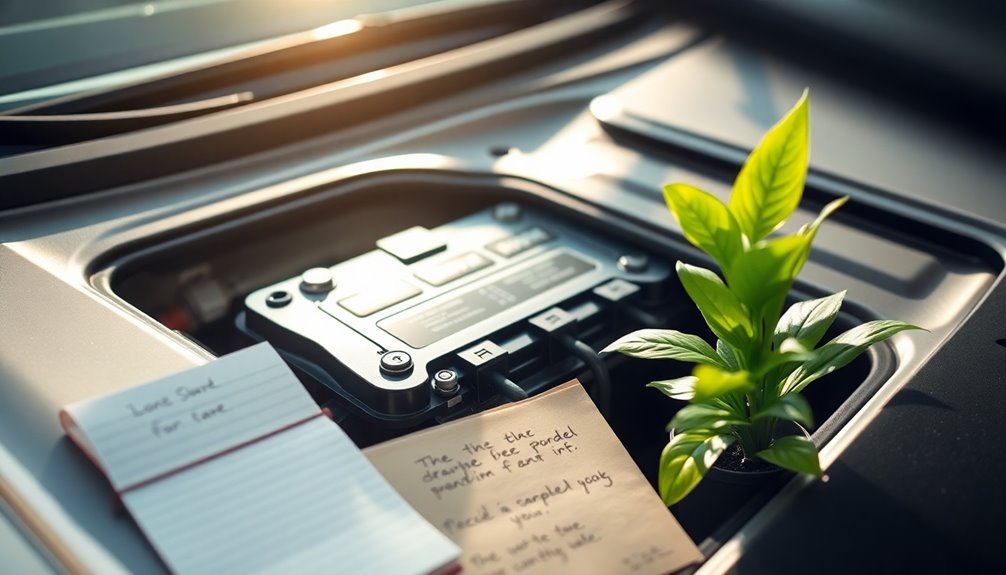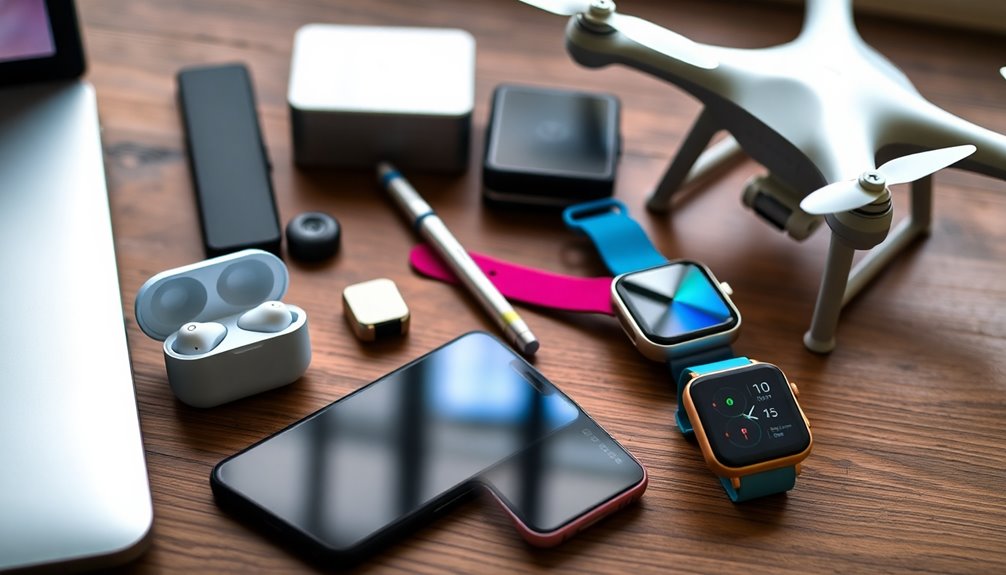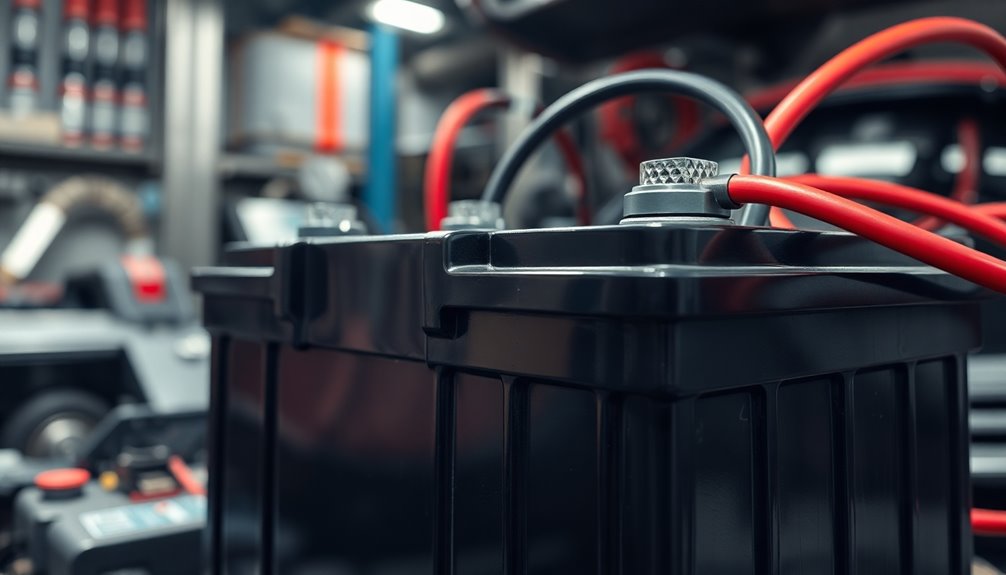Yes, lithium batteries are rechargeable, mainly through lithium-ion and lithium polymer types. They can be recharged thousands of times—between 3,000 to 5,000 cycles—making them a popular choice for gadgets and electric vehicles. Unlike primary batteries, which can't be reused, rechargeable lithium batteries allow you to save money and reduce waste. The charging process involves moving lithium ions back and forth, ensuring efficiency through a Battery Management System. Proper management keeps them safe and extends their lifespan. Want to learn more about their benefits and potential drawbacks? There's plenty of interesting information ahead!
Key Takeaways
- Lithium-ion and lithium polymer batteries are commonly rechargeable, with lifespans of 3,000 to 5,000 charge-discharge cycles.
- Charging lithium batteries involves reversing lithium ion movement, requiring specific chargers to prevent damage.
- A Battery Management System (BMS) ensures safe and uniform charging, enhancing battery efficiency and lifespan.
- Lithium batteries have low self-discharge rates, retaining about 80% of their charge after one year.
- While rechargeable, lithium batteries often have a higher initial cost compared to traditional alkaline batteries.
Types of Lithium Batteries
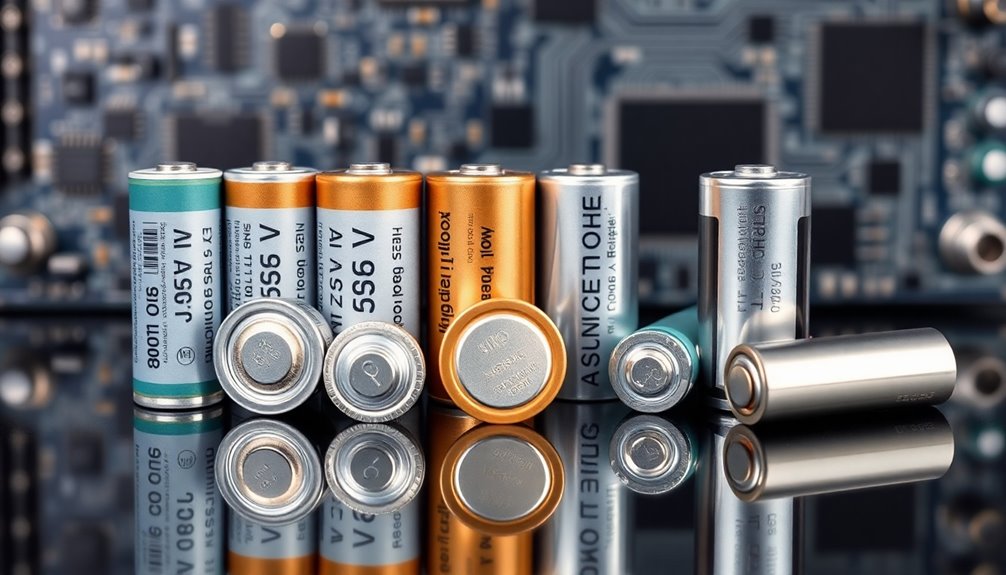
When you explore the world of lithium batteries, you'll find they fall into two main categories: primary (non-rechargeable) and secondary (rechargeable).
Among these, lithium-ion batteries are the most common type of rechargeable lithium batteries, typically operating at a voltage range of 3.6V to 3.7V.
You might also come across lithium polymer batteries, a flexible subtype that maintains high energy density and low self-discharge rates.
Additionally, lithium iron phosphate (LiFePO4) batteries stand out for their thermal stability and safety, making them ideal for various applications.
Understanding these types helps you choose the right battery for your needs, ensuring you get peak performance and longevity from your devices.
Characteristics of Lithium-Ion Batteries

Lithium-ion batteries stand out due to their impressive characteristics, making them a popular choice across various applications.
These rechargeable batteries have a nominal voltage of 3.7V to 4.2V, delivering higher energy outputs than traditional batteries.
You'll appreciate the longevity of a high-quality lithium-ion battery, which can provide between 1,000 to 5,000 charge-discharge cycles, greatly outlasting many alternatives.
Another great feature is their low self-discharge rate, allowing them to retain about 80% of their charge after a year.
Plus, their lightweight and compact design make them ideal for everything from consumer electronics to electric vehicles.
With all these benefits, it's clear why lithium-ion batteries are a top choice for many modern devices.
Charging Process Explained
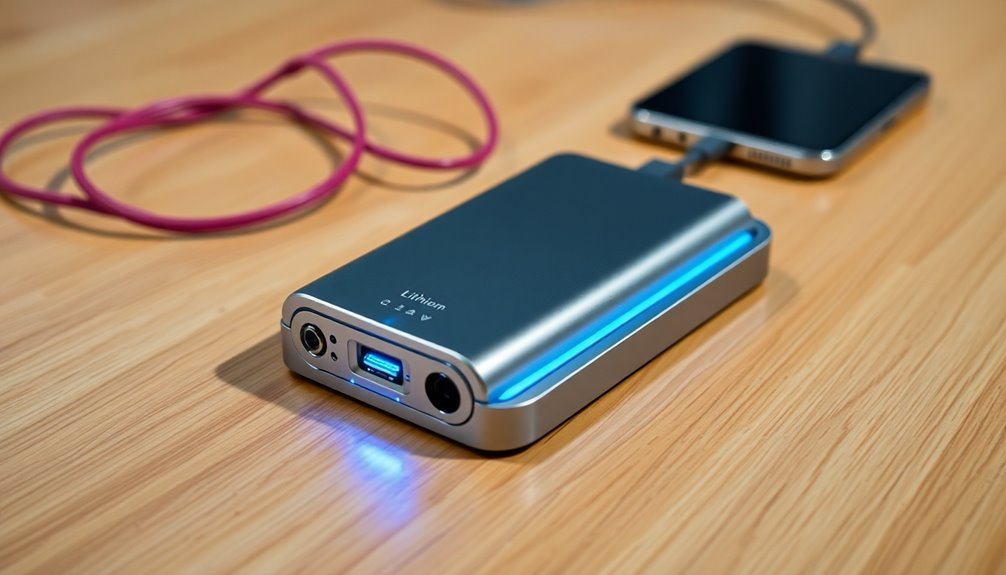
Understanding the charging process of lithium-ion batteries is vital for maximizing their performance and lifespan. When you charge a lithium-ion battery, you reverse the movement of lithium ions from the cathode to the anode, allowing it to store energy for future use.
It's important to use dedicated chargers that match the specific voltage range, typically between 3.7V and 4.2V, to prevent damage. A battery management system (BMS) monitors temperature and guarantees uniform charging, helping you avoid overcharging and extend the battery's life.
Ideally, recharge your lithium-ion battery when it reaches about 20% capacity, as this practice can increase its longevity. With proper care, you can enjoy 3,000 to 5,000 recharge cycles from your battery.
Importance of Battery Management System
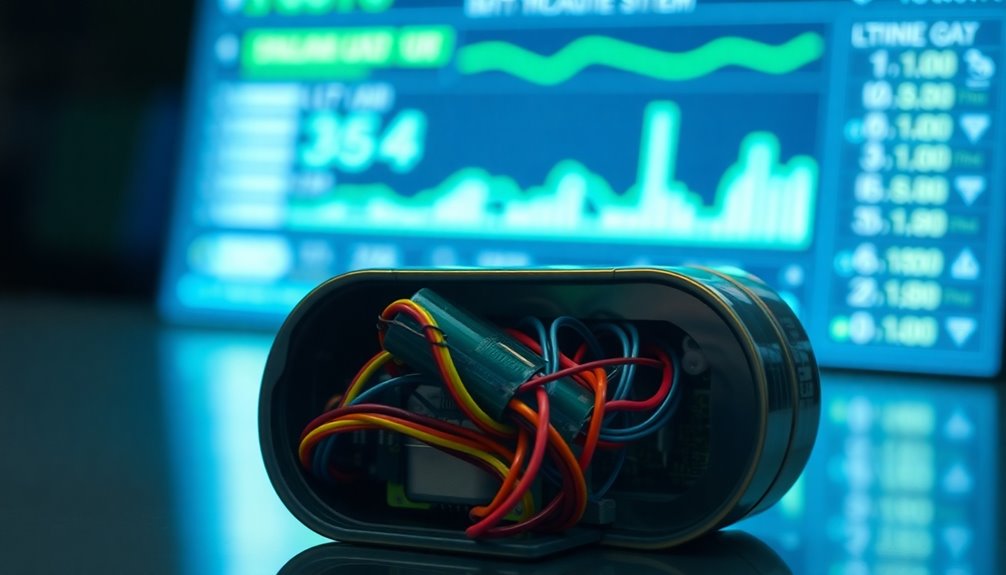
Properly charging your lithium-ion battery not only enhances its performance but also highlights the importance of a Battery Management System (BMS).
This system plays a vital role in monitoring and regulating the performance of lithium-ion batteries, ensuring safe charging and discharging cycles. It protects against overcharging, overheating, and deep discharging, which can lead to reduced lifespan or even catastrophic failure.
By balancing the charge across individual cells, the BMS maintains uniform performance and maximizes battery efficiency. With a well-designed BMS, your lithium-ion batteries can achieve up to 3,000 to 5,000 charge cycles, depending on quality.
Ultimately, a BMS is essential for reliability and safety, especially in applications that require consistent power delivery.
Lifespan and Cycle Life
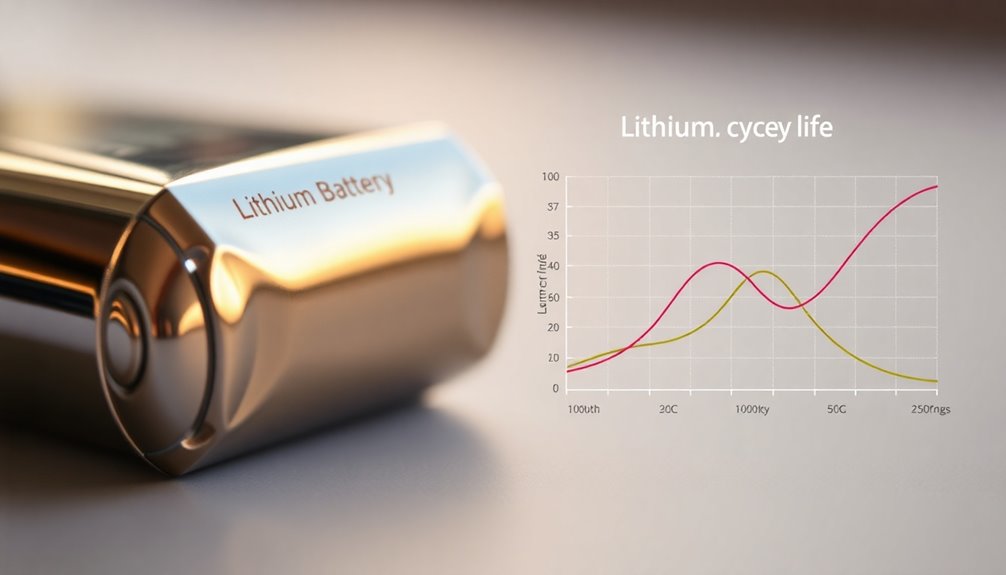
While the lifespan of lithium batteries can vary greatly depending on the type, knowing how to maximize their cycle life is essential for getting the most out of your investment.
High-quality cylindrical lithium-ion cells can offer up to 5,000 cycles, while lithium polymer batteries typically last much shorter.
To extend the lifespan of your lithium batteries, follow these tips:
- Charge your batteries when they reach around 20% capacity.
- Regularly clean terminals to guarantee peak performance.
- Use compatible chargers for maintenance and testing.
- Avoid deep discharging unless necessary to revive non-charging batteries.
Advantages of Lithium Batteries
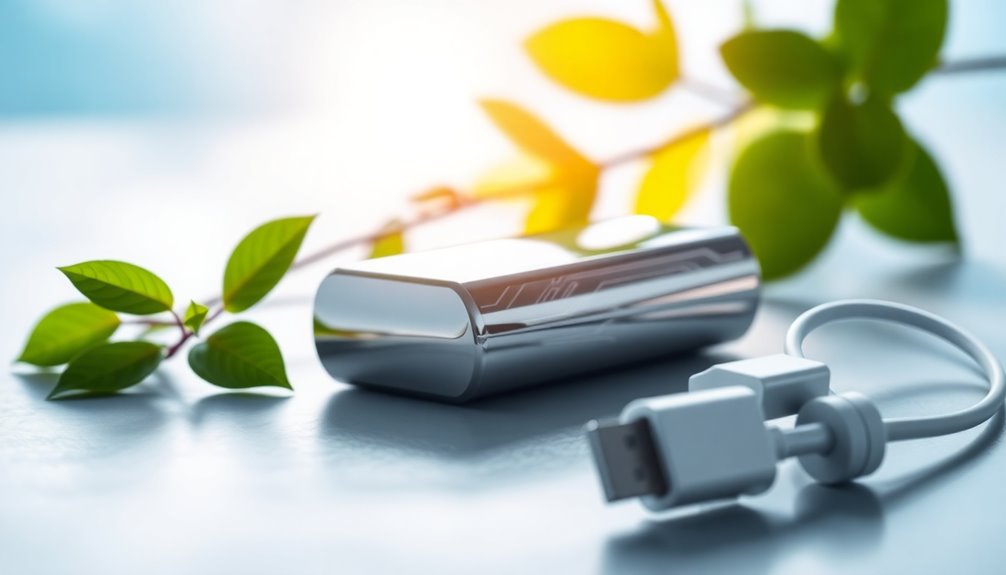
Lithium batteries offer numerous advantages that make them a preferred choice for many applications.
The rechargeable lithium-ion variety provides high energy density, ensuring your devices run longer between charges. With up to 3,000 to 5,000 recharge cycles, these batteries considerably outlast traditional alkaline options.
You'll appreciate their consistent voltage output of 1.5V during discharge, which guarantees stable performance. Plus, lithium batteries charge twice as fast as lead-acid batteries, reducing downtime when you need power quickly.
Their low self-discharge rate means they can retain around 80% of their charge even after a year of storage, enhancing their shelf life.
Finally, their eco-friendly nature makes them a sustainable choice, reducing environmental impact compared to disposables.
Disadvantages and Limitations
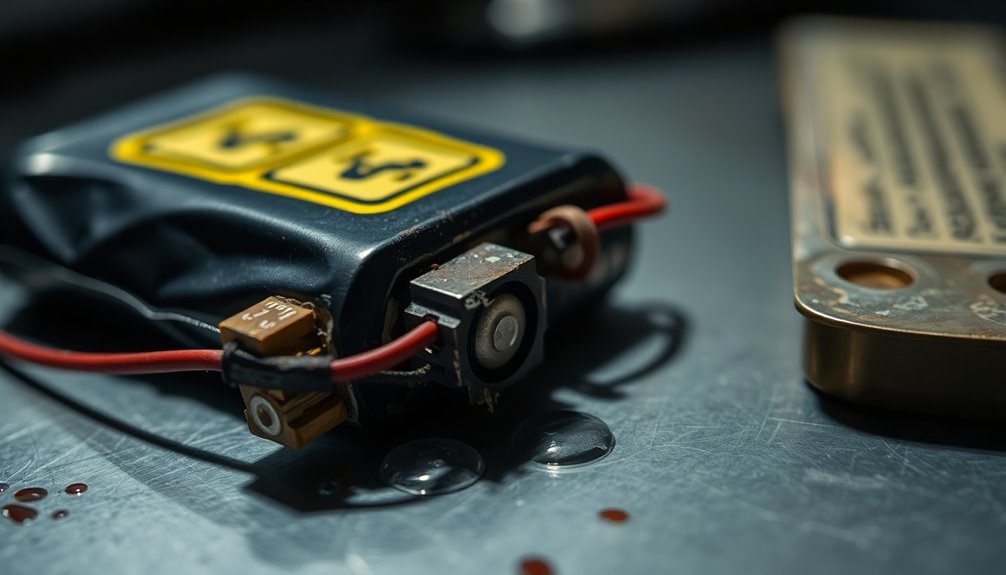
While lithium batteries offer many advantages, you should be aware of their disadvantages.
The higher initial cost can be a barrier, especially compared to other battery types, and their performance may not always meet your needs in high-drain devices.
These limitations can affect your overall experience and usability.
High Initial Cost
Although many users appreciate the long-term savings lithium batteries offer, the high initial cost can be a significant drawback.
When evaluating rechargeable lithium batteries, keep in mind that the upfront investment often exceeds that of traditional alkaline batteries.
Here are some points to reflect upon:
- Rechargeable lithium batteries can cost over £4 per cell, while alkaline options are under £1.
- A 9V lithium-polymer battery may set you back around £7.50.
- Specialized chargers add to the overall cost and complexity.
- Limited availability of quality lithium batteries can drive prices higher.
These factors can deter you from choosing lithium batteries, even if their longevity and efficiency might ultimately save you money in the long run.
Limited High-Drain Performance
When it comes to high-drain devices, you might find that lithium batteries fall short of expectations.
These batteries, especially the 1.5V rechargeable variants, often struggle to deliver consistent power during intense charge and discharge cycles. In applications like camera speedlights or audio equipment, sudden power loss can occur, risking your device's functionality.
Additionally, the constant voltage output makes it hard to gauge how much power remains, which can lead to unexpected depletion at critical moments.
Devices sensitive to RF interference may also perform inconsistently with lithium batteries, limiting their effectiveness in specific high-drain scenarios.
Ideal Applications for Lithium Batteries
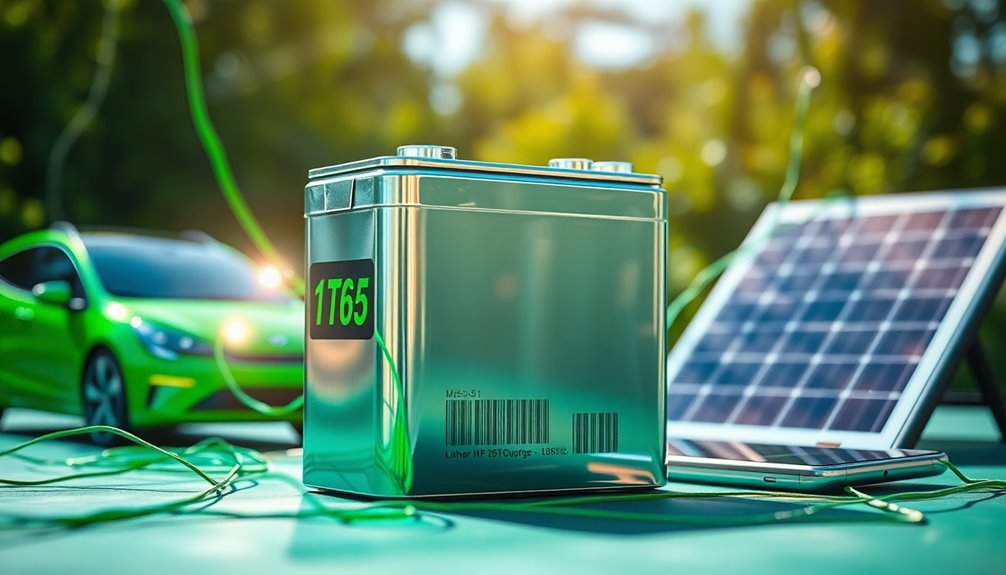
When you think about using lithium batteries, consider their role in medium to high drain devices like game controllers and electric toys.
Their ability to maintain consistent voltage makes them perfect for wireless electronics, ensuring reliable performance.
Whether you're powering LED flashlights or portable gadgets, lithium batteries are designed to meet your needs.
Medium to High Drain Devices
Lithium batteries shine in medium to high drain devices, making them the go-to choice for gadgets like wireless mice and keyboards. Their stable voltage output guarantees consistent performance, even during demanding tasks. You'll find lithium batteries in various applications, providing a reliable power source.
- Rechargeable AA and AAA sizes offer versatility for multiple devices.
- They excel in powering electric toys and game controllers without voltage drops.
- Quick charging capabilities minimize downtime for frequent use.
- Eco-friendly, they can replace around 1,000 to 1,500 disposable alkaline batteries.
While lithium batteries are great for most medium to high drain devices, be cautious with high-drain devices requiring rapid current draw, as performance may not be ideal. Additionally, their ability to offer various payment options makes them a favored choice for businesses looking to enhance customer satisfaction.
Wireless Electronics Compatibility
For wireless electronics, lithium batteries offer an unbeatable advantage in performance and reliability.
The 1.5V rechargeable variants, particularly in AA and AAA sizes, are perfect for devices like wireless mice and keyboards. Their stable voltage output guarantees consistent performance, unlike traditional alkaline batteries that tend to drop in voltage over time.
Plus, with a low self-discharge rate, these batteries retain about 80% of their charge after a year, making them ideal for gadgets you don't use daily.
The impressive charging speed and energy storage capabilities of lithium ions also enhance the efficiency of electric toys and game controllers.
Embracing lithium batteries means enjoying longer-lasting power and reducing environmental impact compared to disposable options.
Consistent Voltage Requirements
While many devices demand a reliable power source, 1.5V rechargeable lithium batteries stand out as the best solution for applications requiring consistent voltage.
These batteries excel in providing consistent power, especially in medium to high drain devices. You'll find their stable voltage output essential for enhancing the efficiency and longevity of your electronics.
- Perfect for wireless mice and keyboards
- Reliable energy for electric toys and game controllers
- Compatible with devices designed for higher voltage thresholds
- Well-suited for evolving technologies prioritizing stable energy outputs
When you choose 1.5V lithium batteries, you're ensuring your devices operate effectively without the worry of significant voltage drop-off.
This makes them a smart choice for modern electronics.
Environmental Impact and Sustainability

As you explore the world of rechargeable batteries, you'll find that lithium batteries stand out for their lower environmental impact compared to traditional disposable options.
With the ability to be recharged 3,000 to 5,000 times, lithium-ion batteries considerably reduce waste and the need for frequent replacements. This longevity plays an essential role in sustainability.
The recycling process for these batteries is critical, as it recovers valuable materials like lithium, cobalt, and nickel, which are finite resources.
Moreover, advancements in eco-friendly production methods are minimizing emissions and energy consumption during manufacturing.
Future Trends in Lithium Technology
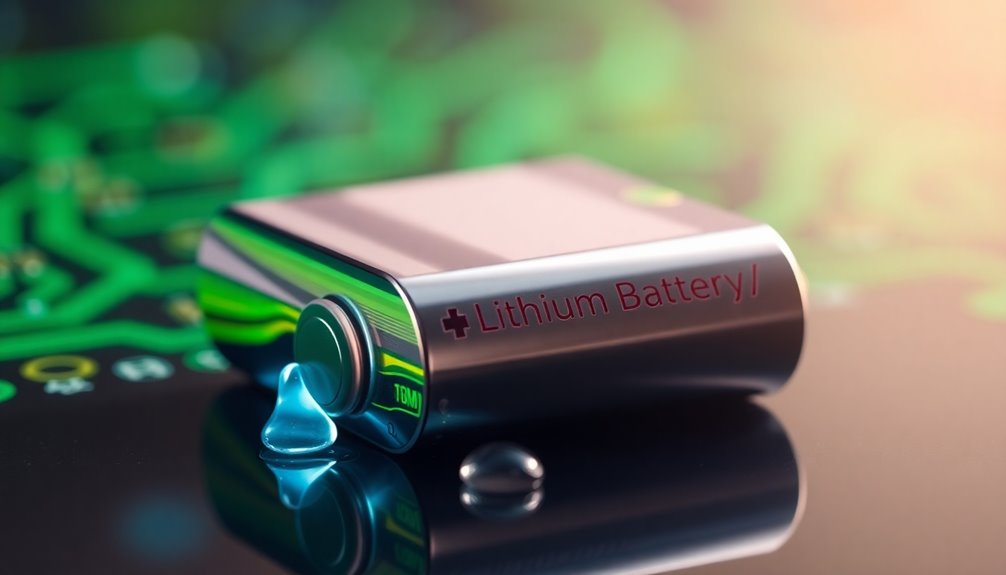
As you look ahead, you'll see exciting trends in lithium technology that promise cost reductions and enhanced energy density.
Innovations in eco-friendly developments are making these batteries safer and more efficient for everyday use.
Staying informed about these advancements can help you make better choices for your energy needs.
Cost Reduction Innovations
With continuous advancements in lithium battery technology, you're likely to see significant cost reductions that will make these energy solutions more accessible.
Innovations in battery chemistries and production processes are set to lower prices by up to 30% by 2025. This shift will enhance the affordability of lithium-ion and lithium-polymer batteries, especially for electric vehicles and renewable energy systems.
- Automated manufacturing techniques will streamline production costs.
- Economies of scale will further drive down prices.
- Research into alternative materials will reduce reliance on expensive raw materials.
- Increased investment in sustainable energy solutions will promote efficiency innovations.
These cost reduction innovations won't only benefit consumers but also accelerate the adoption of lithium battery technologies across various sectors.
Enhanced Energy Density
The advancements in cost reduction innovations set the stage for exciting developments in energy density for lithium batteries.
You'll soon see lithium-ion batteries utilizing lithium cobalt oxide, greatly boosting energy density beyond the current 233 mAh/g. This improvement means higher capacity for your portable devices and electric vehicles, making them more efficient than ever before.
With a recharge cycle life of 3,000 to 5,000 cycles, these batteries offer a sustainable option that lowers your cost per use over time.
Future innovations in lithium polymer technology will enhance energy retention and output stability, ensuring consistent power delivery for demanding applications.
As the demand for renewable energy storage grows, expect lithium batteries to evolve, meeting your energy needs effectively.
Eco-Friendly Developments
While advancements in lithium battery technology promise enhanced performance, they also pave the way for eco-friendly developments that prioritize sustainability.
You'll see a significant shift as manufacturers focus on creating batteries that minimize environmental impact. Here are some trends to keep an eye on:
- New lithium chemistries improve energy density while reducing harmful materials.
- Enhanced recycling programs aim to repurpose old batteries, cutting down waste.
- Innovations in charge cycles extend the lifespan of lithium batteries in electric vehicles.
- Increased accessibility makes eco-friendly battery options available for everyday consumers.
- Additionally, renewable energy innovations are driving the demand for sustainable battery solutions in various applications.
As these trends unfold, you can expect lithium batteries to become more sustainable, supporting a greener future while maintaining their essential role in technology and energy storage.
Frequently Asked Questions
What Are the Disadvantages of a Lithium-Ion Rechargeable Battery?
When you consider lithium-ion rechargeable batteries, you'll notice several disadvantages.
They can be pricier upfront compared to other options like NiCad or NiMH. These batteries also have a sensitivity to high temperatures, which might reduce their lifespan.
You'll need specialized chargers to avoid issues like overcharging. Additionally, they can suddenly lose power in high-drain devices, and there's a risk of flammability if not handled properly, raising safety concerns.
What Is the Holy Grail of Lithium Batteries?
The Holy Grail of lithium batteries is the quest for a battery that offers high energy density, longevity, fast charging, and safety.
You're looking for advancements like solid-state technology that replaces liquid electrolytes, reducing risks and enhancing performance.
Imagine a battery with over 5,000 charge cycles and an energy density exceeding 400 Wh/kg.
Innovations like lithium-sulfur and lithium-air batteries could revolutionize how we power electric vehicles and portable electronics.
Are Lithium-Ion Cells Rechargeable Cells True or False?
Imagine a phoenix rising from the ashes, reborn with each cycle. That's the essence of lithium-ion cells—they're rechargeable!
You can rely on them for hundreds, even thousands of charging sessions, making them a smart choice for your devices. As you plug in, lithium ions dance from the cathode to the anode, ready for another round.
Do Rechargeable Lithium Batteries Exist?
Yes, rechargeable lithium batteries do exist!
You'll find them in many forms, like lithium-ion and lithium-polymer batteries, commonly used in everything from smartphones to electric vehicles.
These batteries can be recharged hundreds to thousands of times, making them a cost-effective choice in the long run.
Plus, they don't suffer from the memory effect, so you can charge them flexibly without worrying about losing capacity.
They're a smart option for your devices!
Conclusion
In summary, lithium batteries are indeed rechargeable and play an essential role in modern technology. With an impressive cycle life, they can typically endure around 500 to 1,500 charge cycles, depending on the specific type. This longevity makes them ideal for various applications, from smartphones to electric vehicles. As we continue to innovate and improve battery management systems, the future of lithium technology looks promising, paving the way for more sustainable energy solutions.

